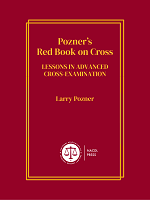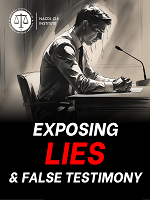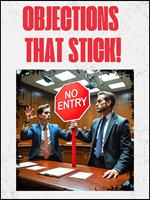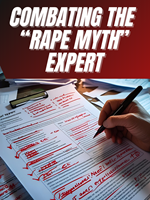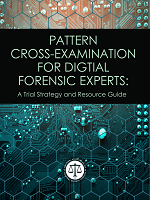Access to The Champion archive is one of many exclusive member benefits. It’s normally restricted to just NACDL members. However, this content, and others like it, is available to everyone in order to educate the public on why criminal justice reform is a necessity.
Except for the persistence of capital punishment, there is no greater tyranny in the criminal legal system than excessive sentencing. Borne of the political exploitation of crime, often fed by racially disparate polices, and emblematic of an utter disregard for fundamental notions of humanity and redemption, double- and triple-digit sentences, as well as life sentences, many times without the possibility of parole, are handed down in this nation with mind-numbing regularity. That is why the United States is one of the leading incarcerators on the planet.
These ghastly sentences are imposed without regard to the age of the offender and in total disregard of the science of brain development and the capacity for human growth. Where is the humanity in presuming that a person who is sentenced for a crime committed in his teens or 20s is the same person when he is 40 or 50? What is the toll extracted on families, communities, and yes, even taxpayers, in routinely condemning people to prison for 10, 20, 30, or more years — even for nonviolent offenses?
Despite the mountain of evidence that overly long sentences produce diminishing returns, the practice continues. While there has been some amelioration of sentences related to controlled substance offenses in recent years, that has been the exception. The knee-jerk reaction by politicians to virtually any disfavored social, economic, or personal behavior is to create new crimes, new punishments, and frequently new mandatory minimums. And few and far between are the political leaders who will support the repeal of a mandatory minimum.
Of course, it was not always like this. There was a time when sentences were commonly imposed with wide ranges and parole eligibility. Under that approach many offenders could and did earn early release. Endless reports and studies have been written on the many causes of mass incarceration — more than 2.2 million in the nation’s jails and prison, a 500 percent increase in 40 years.{1} 1 The Sentencing Project, Criminal Justice Facts, https://www.sentencingproject.org/criminal-justice-facts/ (last visited Dec. 19, 2020). Suffice it to note that beginning with the “law and order” movement in the 1960s and 1970s, and continuing with the war on crime and drugs, the brazen political exploitation of the Willie Horton case, and the enactment of “truth in sentencing laws,” sentences in the 1990s steadily increased and early release mechanisms were disincentivized.{2} 2 https://www.usatoday.com/story/news/factcheck/2020/07/03/fact-check-1994-crime-bill-didnt-bring-mass-incarceration-black-people/3250210001.
But there is an answer. And NACDL has embraced it.
Following approval by the NACDL Board of Directors at its October meeting, on Dec. 10, 2020, NACDL formally released model legislation and an accompanying report, Second Look = Second Chance: The NACDL Model “Second Look” Legislation.{3} 3 See NACDL Model “Second Look” Legislation (2020), available at www.nacdl.org/secondlook, National Association of Criminal Defense Lawyers; Colleen Grablick, D.C. Council Gives Final Approval to Second Look Act, DCIST -- endnote
While NACDL is not the first to advance this concept,{4} 4 As noted in the report, the drafters of the Model Penal Code offered guiding principles for Second Look legislation. See Second Look report at 3 and Model Penal Code § 305.6. Additionally, Sen. Cory Booker introduced legislation in Congress that would create federal second look procedures similar to those NACDL proposes. See S.2146, 116th Cong. (2019-2020). it may well be the first national organization to propose a fully developed draft bill for consideration by the states and, as one would expect from an organization committed to defense advocacy, it prioritizes humanity and rationality. The legislation would afford a universally available avenue for judicial review of lengthy sentences. The goal is to provide an opportunity, commencing after 10 years of imprisonment, for an individualized consideration of whether continued service of the initial sentence is warranted. It specifically authorizes the court to consider relevant information that emerged since the time of the sentence, including, most importantly, the individual’s institutional record. Equally significant, the proposed law would permit a sentence reduction notwithstanding the fact that the original sentence was required by a mandatory minimum.
While some might say that this is simply a de facto reinstitution of early parole, that is plainly not the case. By vesting the authority in a court, it ensures that the process is not dominated by the executive branch, which is generally far more sensitive to political consideration than the judiciary, and it guarantees a transparent adversarial process. Prosecutors and victims will have full opportunity for input. The applicant will have the benefit of counsel and an opportunity to present any relevant evidence. And both the prosecution and defense have appellate remedies.
Another important aspect of the NACDL proposal is that it does not exclude any offense from eligibility. Undoubtedly, opponents will argue that certain offenses are so horrific that the individual should never be considered for early release. And certainly, it may be the case in limited circumstances that the release of a particular individual may be incompatible with public safety consideration. But categorical exclusion based on the nature of the offense is fundamentally unjust. Take the highest offense level: homicide. Everyone who has experience with the criminal legal system knows that homicide is a broad term that embraces a wide range of behaviors and occurs under infinite circumstances. There is the professional hit man who kills for hire. Or the sociopath who engages in a mass random killing. And then there is the individual who gets into a fight and in the heat of passion momentarily loses control and kills another — perhaps arguably in self-defense, although a jury did not agree. Rather than exclude whole classes of people from relief, as is the case with the recently enacted First Step Act,{5} 5 While the First Step Act provides an opportunity for federal prisoners to earn reductions of their sentence through certain programming, it details nearly 70 types of convictions that render an inmate ineligible to accrue time credits for successfully completing recidivism-reduction activities. 18 U.S.C. § 3632(d)(4)(D). the statute trusts the process. Trial and appellate judges will ensure that dangerous individuals are denied the relief.
Another potential argument is that this will clog court dockets. That argument fails for at least two reasons. First, while the proposed statute affords both the applicant and the prosecutor a right to be heard, it does not require an evidentiary hearing. That is left to the discretion of the court. When an individual is plainly ineligible, the court can quickly resolve the case without a significant allocation of resources. Second, justice requires judicial proceedings. Expediency has for too long been a driver of injustice in the criminal legal system. It has been cited to justify a wide range of abusive practices including the manipulation of pretrial release conditions, coercive plea practices, and the tyrannical use of the trial penalty to extract the waiver of a litany of rights. If the state is going to authorize or compel courts to impose draconian sentences, it is not too much to require courts to review those sentences periodically. Furthermore, if one is going to focus on conservation of resources, one should also consider the social and economic impact of keeping a rehabilitated individual behind bars for years or decades longer than necessary.
Finally, two noteworthy provisions in the draft statute anticipate and ameliorate the trial penalty. In the section that enumerates the factors to be considered, there is a requirement that the court consider “[a]ny evidence concerning whether the petitioner’s sentence was enhanced because the petitioner exercised their constitutional right to a trial.”{6} 6 NACDL Model “Second Look” Legislation, Section 6(A)(VIII). Additionally, borne of the wholly justifiable concern that prosecutors will seek waiver of the right to a second look as yet another tool to extract a guilty plea, the statute provides that “[n]o waiver of the right to make an application for a resentencing under this Act shall be permitted or honored by the sentencing court.”{7} 7 NACDL Model “Second Look” Legislation, Section 4(G).
Many reforms are necessary to reverse mass incarceration and redress the systemic disparity that has disproportionately imprisoned minorities and other disadvantaged communities. Second Look legislation just may be the most effective and sensible vehicle to redress those injustices. Now is the time for Second Looks.
About the Author
Norman L. Reimer is NACDL’s Executive Director and Publisher of The Champion.
Norman L. Reimer
NACDL
Washington, DC
202-465-7623
nreimer@nacdl.org
www.nacdl.org
@NACDLExecDir
Endnote
- See NACDL Model “Second Look” Legislation (2020), available at www.nacdl.org/secondlook, National Association of Criminal Defense Lawyers; Colleen Grablick, D.C. Council Gives Final Approval to Second Look Act, DCIST, Dec. 1, 2020, updated Dec. 15, 2020, available at https://dcist.com/story/20/12/01/dc-council-approves-criminal-justice-reform-bill. NACDL’s model “Second Look” legislation emanated from NACDL’s Second Look Task Force. The accompanying report was authored by JaneAnne Murray, Sean Hecker, Michael Skocpol, and Marissa Elkins. NACDL’s Second Look Task Force is co-chaired by JaneAnne Murray and Nanzella “Nan” Whitfield and is made up of the following members: Alisa Blair, Jeremy Delicino, Marissa Elkins, Nina Ginsberg, Sean Hecker, Shon Hopwood, Steven Morrison, Robert Patillo, Marjorie Peerce, Todd Pugh, Gabriel Reyes, Christina Swarns, and Bruce Udolf. Brianna Newcomb and Thomas Huling, students at the University of Minnesota Law School, provided research assistance to the report’s authors. (^ return)





